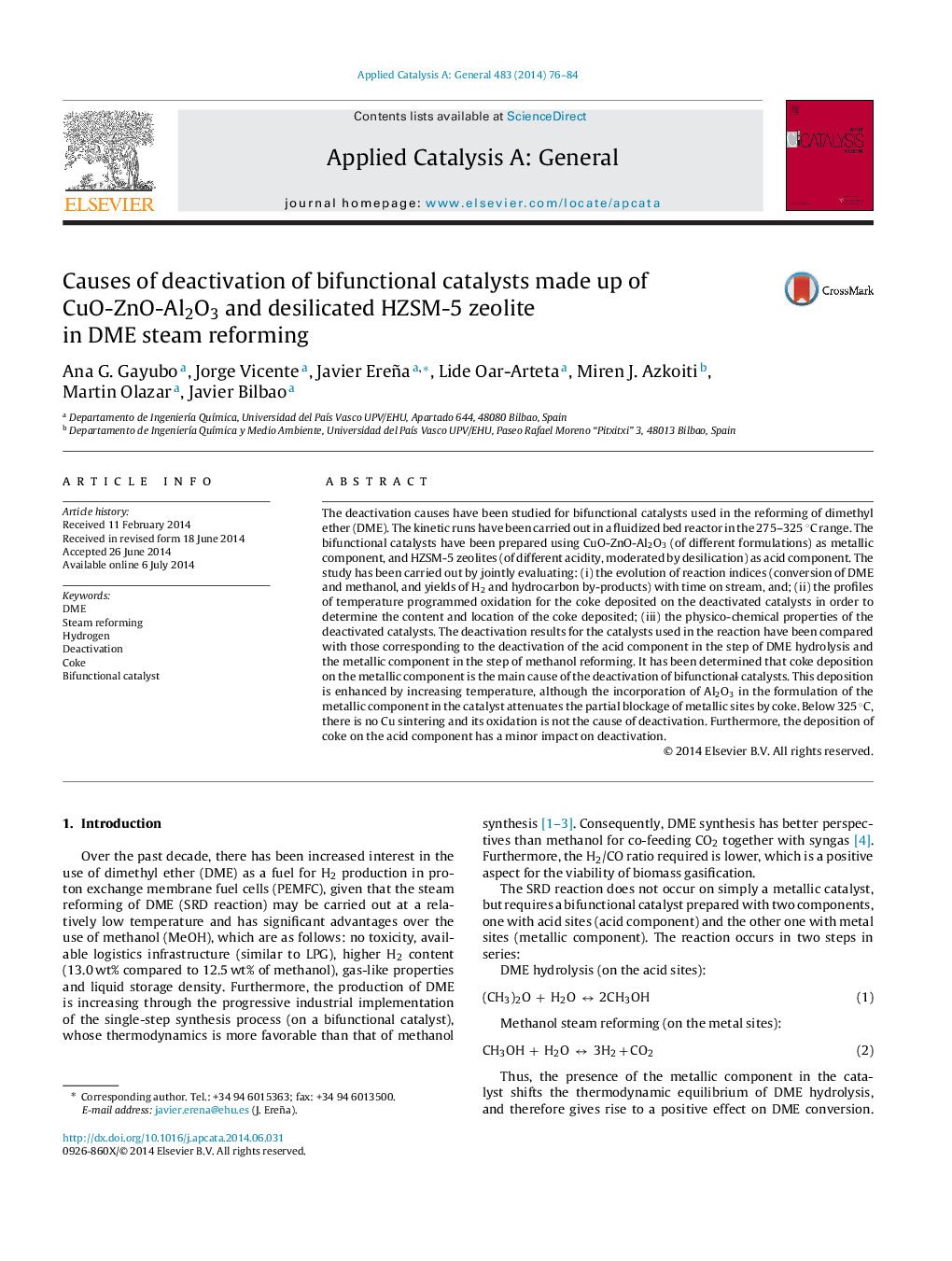| Article ID | Journal | Published Year | Pages | File Type |
|---|---|---|---|---|
| 39733 | Applied Catalysis A: General | 2014 | 9 Pages |
•The main cause of deactivation is the partial blockage of CuO-ZnO sites by coke.•Below 325 °C Cu is neither sintered nor oxidized.•The addition of Al2O3 helps to attenuate coke deposition on the metallic function.•A high acidity and acid strength of the zeolite contribute to forming hydrocarbons.•The desilication of the zeolite by alkaline treatment attenuates coke deposition.
The deactivation causes have been studied for bifunctional catalysts used in the reforming of dimethyl ether (DME). The kinetic runs have been carried out in a fluidized bed reactor in the 275–325 °C range. The bifunctional catalysts have been prepared using CuO-ZnO-Al2O3 (of different formulations) as metallic component, and HZSM-5 zeolites (of different acidity, moderated by desilication) as acid component. The study has been carried out by jointly evaluating: (i) the evolution of reaction indices (conversion of DME and methanol, and yields of H2 and hydrocarbon by-products) with time on stream, and; (ii) the profiles of temperature programmed oxidation for the coke deposited on the deactivated catalysts in order to determine the content and location of the coke deposited; (iii) the physico-chemical properties of the deactivated catalysts. The deactivation results for the catalysts used in the reaction have been compared with those corresponding to the deactivation of the acid component in the step of DME hydrolysis and the metallic component in the step of methanol reforming. It has been determined that coke deposition on the metallic component is the main cause of the deactivation of bifunctional catalysts. This deposition is enhanced by increasing temperature, although the incorporation of Al2O3 in the formulation of the metallic component in the catalyst attenuates the partial blockage of metallic sites by coke. Below 325 °C, there is no Cu sintering and its oxidation is not the cause of deactivation. Furthermore, the deposition of coke on the acid component has a minor impact on deactivation.
Graphical abstractFigure optionsDownload full-size imageDownload high-quality image (125 K)Download as PowerPoint slide
